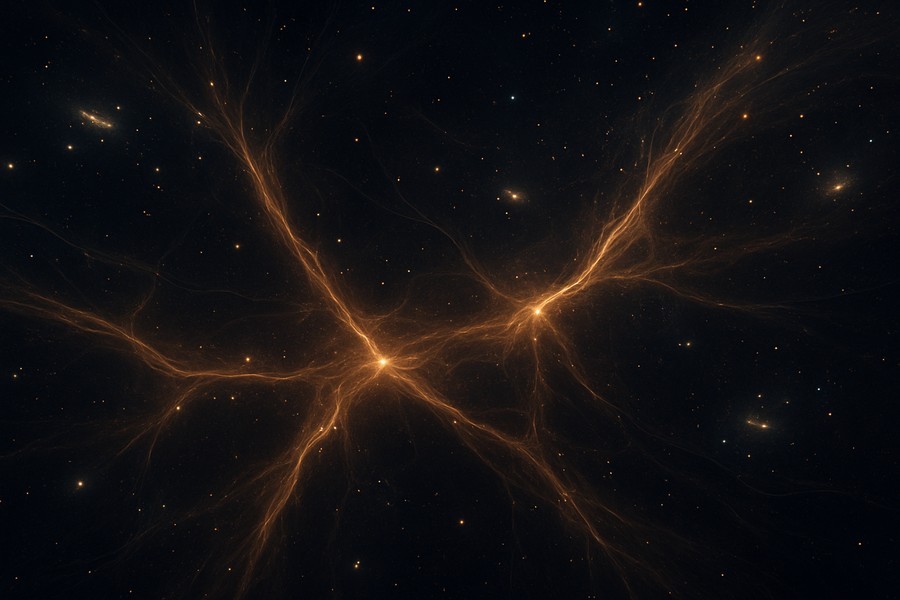
Universe's First Magnetic Fields Similar to Human Brain and Still Exist in the 'Cosmic Web'
The earliest magnetic fields of the universe might have been weaker than originally thought, similar to the strength of magnetic activity in the human brain, a recent study suggests.
Computer simulations in the hundreds of thousands were employed to investigate the remnants of these ancient magnetic fields, which continue to exist in the so-called "cosic web" billions of years later.
Understanding Ancient Magnetism
Magnetism is a natural force that results from the movement of electrically charged particles. It has been around since shortly after the Big Bang, when the young universe was populated by a multitude of such particles. The belief held by many experts is that the original magnetic fields formed by these particles, referred to as primordial magnetic fields, were much weaker than the ones produced by complex cosmic objects we see today, such as stars, black holes, and planets.
However, the recent study suggests that these primordial fields might have been even weaker than we originally thought. The study team used extensive computer simulations to determine an upper limit for the strength of these fields, finding that their maximum strength was likely around 0.00000000002 gauss — billions of times weaker than a standard refrigerator magnet, which has a strength of about 100 gauss.
Human Brain and Universe Connected?
Interestingly, the study noted that the strength of these magnetic fields is similar to that generated by neurons in the human brain. Despite their weak strength, remnants of these magnetic fields continue to exist within the cosmic web — a mysterious, expansive structure that spans the entirety of the known universe. This discovery was crucial in revealing these new findings.
Unlocking the Mysteries of the Cosmic Web
The cosmic web is a vast network of nebulous strands that connect all galaxies in the universe, much like an enormous 3D spider's web. There is still much we do not know about the cosmic web, including its exact composition. However, scientists have recently begun to capture images of this immense structure and have started to chart it in detail.
One of the greatest puzzles about the cosmic web is the presence of its own magnetic fields. This is particularly puzzling in areas of space between galaxies, where the web is isolated in large expanses of emptiness.
According to the researchers, "Our hypothesis was that this [magnetism] could be a legacy of events occurring in cosmic epochs during the birth of the universe. This is what we sought to ascertain with our work."
The research team theorizes that the very first primordial magnetic fields could have been caught up in the initial expansion of the universe and later become entangled with the cosmic web as it developed in the growing spaces between galaxies.
Future Investigations
In their study, the researchers used about 250,000 computer simulations, based on observational data of the cosmic web, to reconstruct this presumed sequence of events. This allowed them to set "strict limits on the intensity of magnetic fields formed in the very early moments of the universe," the researchers said.
While these findings are still theoretical due to the current inability to directly observe primordial magnetic fields, the researchers assert that the results are consistent with recent discoveries about the cosmic microwave background (CMB), the radiation leftover from the Big Bang.
